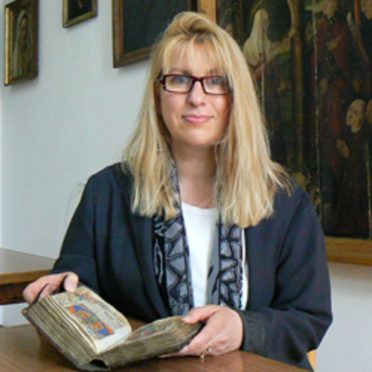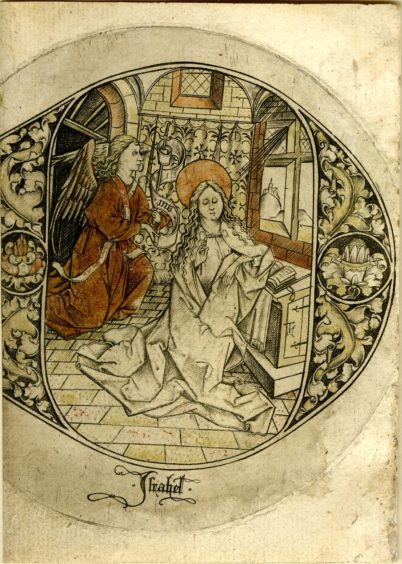An art historian’s detective work to restore a medieval prayer book has its foot in ancient and modern technologies.
Professor Kathryn Rudy, of the School of Art History at the University of St Andrews, has spent years tracking down a number of missing prints that had been pasted into a hand-written prayer book created in the year 1500.
The manuscript had lost many of its illustrations as part of a trend in the 19th Century to collect prints separately.
Professor Rudy has painstakingly traced the lost images and reconstructed the process by which the publication was created in the Netherlands.
A number of the pictures are contained in her own book, Image, Knife, and Gluepot: Early Assemblage in Manuscript and Print, published by Open Book Publishers.
The vast majority are not reproduced in the book but are easily available on the internet – mostly hosted by the British Museum website.
Bringing the process right up to date they can be accessed via QR codes which allow the reader to view them using a mobile phone.
Professor Rudy said: “This manuscript brought together two technologies – the hand-written word, and the printed image. Bringing them together in the late 15th Century was incredibly inventive.
“When curators and collectors broke the book up in the 19th Century, they damaged the evidence.
“Reconstructing it today has provided fascinating insight into early experiments with printing. To tell the story using 21st Century QR technology to link the images is particularly appropriate, given how innovative it was when it was made.”
The Gutenberg printing press was invented around 1450. However, the process had high start-up costs so hand-written manuscripts continued to be produced with people adding printed images to them.
Hundreds of such images could be created with an engraved copper plate, ink and paper. These could be cut apart and pasted into the book – effectively clip art.
The book, Image, Knife, and Gluepot: Early Assemblage in Manuscript and Print published by Open Book is available online for free: https://www.openbookpublishers.com/product/806.






